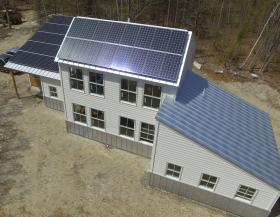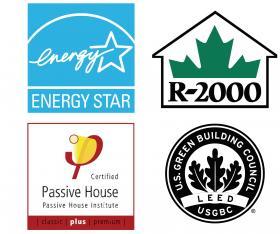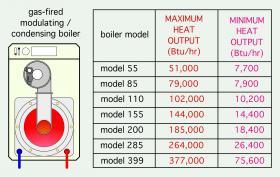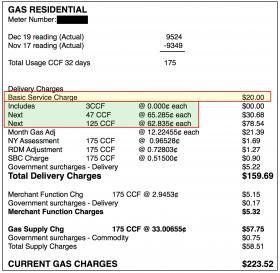PREFACE
The market for hydronic heat sources, like many products that use energy to provide a benefit, is shaped by public perception, government policy and economic competition.
As the 21st century unfolds, social attitudes and government policies around the world are increasingly focused on climate change, with a prevailing emphasis on reducing carbon emissions. There are widely varying opinions on how “decarbonization” should be dealt with. They range from complete dismissal of any need to act on the subject, to proposals that would radically change how an average person would eat, remain comfortable in their home or workplace, travel, or even use their leisure time.
This issue of idronics is not meant to endorse any specific view on how carbon reduction should be dealt with. However, one objective of idronics is to provide information on trends that are likely to influence the market in which HVAC professionals work. To that end, it appears highly likely that the energy used by future hydronic heating and cooling systems will be increasingly supplied through electricity and less by the burning of fossil fuels.
There are several observations and market trends that support this statement. They include:
Government policy supporting decarbonization
Currently there are expanding government policies that discourage use of carbon-based fuels in favor of electricity. These policies are being implemented by a wide spectrum of government agencies, including federal, provincial, state and municipal. They are based on the premise that an increasing percentage of electricity will be generated by renewable sources such as utility-scale solar photovoltaic systems, wind energy farms and hydroelectric facilities. These policies are having an effect. There is steady growth in the amount of renewably sourced electricity available to the North American power grid. Since 2010, solar electrical generating capacity in the U.S. has increased 80-fold. Electricity generated by utility-scale wind farms has tripled over the same period. Electrification is also being increasingly implemented in the transportation sector.
Financial incentives
Financial incentives have been implemented by government agencies and private utilities to encourage use of electric heat pumps. Past experience consistently proves that markets adapt to leverage these incentives while they are available. That experience also proves that the phaseout and eventual elimination of these financial incentives can lead to rapid market adjustments.
Strong interest and impressive market growth for “net-zero” buildings
Although there are several ways that "net-zero" can be defined, most consumers understand the concept as a building that produces all the energy it requires to support an average lifestyle, provide an adequate work environment or otherwise allow the building to sustain its intended function. Since virtually all buildings have electrical loads, some of the energy has to be produced on site, usually by solar photovoltaic systems, or by a "community" solar cooperative using a larger-scale solar photovoltaic system.
Net zero housing units within the U.S. increased by 59% from 2017 to 2018. Over that same period, the increase in net zero housing units in Canada was 240%. Multi-family projects currently represent 71% of the total net zero housing stock. One market research firm anticipates that the global market for net zero buildings will increase at a compound annual growth rate of 39% by 2021.
The only practical approach to achieving net zero is through use of electricity generated by renewable sources such as solar photovoltaic systems. Unlike burning fossil fuels, which is a non-reversible form of energy conversion, electricity can be manipulated in many ways and over many "scales." Electricity generated at a building site can be accurately metered back to the utility grid and instantly used by any of the millions of electrical loads served by that grid. Techniques such as net metering, real-time pricing, time of use rates, and the aggregation of thousands of residential battery storage systems into a “virtual utility” provide flexibility in how electrical energy can be favorably managed. This flexibility, and its associated benefits, are far beyond those which could be practically implemented using fossil fuels.
Decreasing heating and cooling loads
Residential building and energy codes continue to mandate lower heating and cooling loads. Reduced residential heating and cooling loads are also encouraged through programs such as ENERGY STAR®, Certified Passive House and R-2000 (Canada). Reduced heating and cooling loads in commercial structures are encouraged through programs such as LEED (Leadership in Energy and Environmental Design).
Residential design heating loads in the range of 10 to 15 Btu/hr per square foot of floor area are becoming more common in new construction or deep energy retrofits. Thus, a modern 2,000 square foot home could have design heating load of only about 20,000 Btu/hr. This is about 1/3 the design load of a typical 2,000 square foot house constructed during the 1980s.
Residential building and energy codes continue to mandate lower heating and cooling loads. Reduced residential heating and cooling loads are also encouraged through programs such as ENERGY STAR®, Certified Passive House and R-2000 (Canada). Reduced heating and cooling loads in commercial structures are encouraged through programs such as LEED (Leadership in Energy and Environmental Design).
Residential design heating loads in the range of 10 to 15 Btu/hr per square foot of floor area are becoming more common in new construction or deep energy retrofits. Thus, a modern 2,000 square foot home could have a design heating load of only about 20,000 Btu/hr. This is about 1/3 the design load of a typical 2,000 square foot house constructed during the 1980s.
Lack of suitable combustion-based heat sources
As building design heating loads continue to drop, it becomes difficult (or impossible) to find combustion-based heat sources that would not be significantly oversized for those loads. The smallest gas-fired mod/con boiler currently available has a rated output of approximately 50,000 Btu/hr and a turndown ratio of about 6.7 to 1. Even at its lowest stable firing rate, the heat output from this boiler would provide 39% of a 20,000 Btu/hr design heating load. Oversized combustion-type heat sources tend to short cycle which lowers their net efficiency. By comparison, there are more selections for electrically operated heat pumps that can better match lower heating loads.
Basic service charges & pricing for natural gas
For houses with natural gas service, the monthly basic service charge associated with having the gas meter becomes an increasingly larger percentage of the gas invoice as the building’s design heating load decreases. For modest homes, constructed to ENERGY STAR® or other contemporary energy conservation standards, the total monthly service charges may even exceed the cost of the gas consumed.
Many gas utilities also charge a higher rate per CCF (100 cubic feet) for some initial quantity of natural gas, with a decreasing rate as usage increases. This tends to increase the average price per CCF of gas required for homes with low heating loads.
Both of these factors can be seen in the residential gas service invoice in Figure 3-6.
The basic service charge and sliding price scale discourage use of natural gas in low-load homes in favor of an "all-electric" home. For rural houses, the leasing or amortized purchase cost of a large propane storage tank adds to monthly energy bills. These costs are eliminated when the only metered energy source is electricity.
Safety issues
Considering that they are used in tens of millions of buildings, natural gas and fuel oil have relatively good safety records. Still, natural gas is flammable and potentially explosive under the right conditions. A leak in a residential fuel oil tank, if not immediately detected and corrected, can require environmental remediation that costs tens of thousands of dollars. Furthermore, any combustion process produces some amount of carbon monoxide, which if leaked into buildings in sufficient quantities can cause asphyxiation. The choice of fuel can also affect insurance rates. Insurance companies often require higher premiums for homes using fuel oil or firewood for home heating. These potential concerns are not present when electrically operated heat pumps provide heating and cooling.
Moratoriums on natural gas expansion
In some highly populated areas, an increase in building construction, combined with conversion of oil-based heating to natural gas in existing buildings, has increased demand for natural gas. This has strained the ability of existing gas distribution networks, causing some U.S. utilities to enact (or threaten to enact) moratoriums on any expansion of natural gas service in their territory. This has forced developers to look at alternatives for heating and cooling. Electrically operated heat pumps are an attractive alternative.
All of these trends and circumstances are generally beyond what an individual, or even a sizable HVAC corporation, can control. Without some degree of adaptation to the changing energy landscape, it will be difficult or impossible to meet customer expectations, comply with codes and regulations, or work with future product offerings.
The North American hydronic heating and cooling market will be affected by these trends and circumstances. Increasing use of electrical energy will support the growth of heat pumps as hydronic heating and cooling sources. When paired with hydronic distribution systems, both water-to-water and air-to-water heat pumps offer the benefits of low operating cost, high distribution efficiency, design flexibility and unsurpassed comfort. Of these two types, the air-to-water heat pump offers several compelling advantages.








